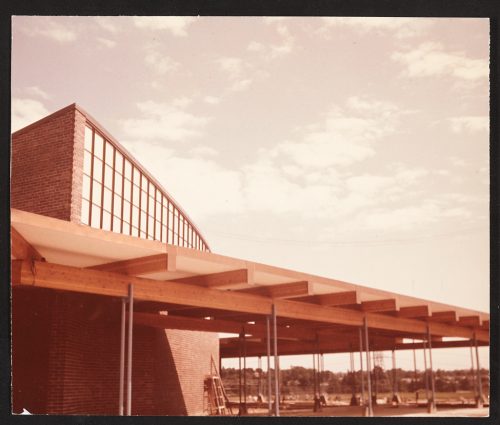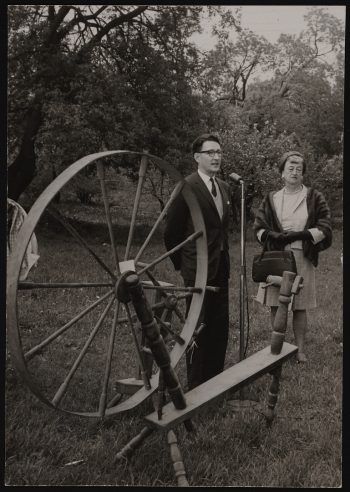
In January 1946, East York Township Council appointed soccer player and military veteran Stan Wadlow (1903-1989) as its first Director of Recreation. His major responsibility was the creation of recreation programs and facilities using newly available provincial funding under the Physical Fitness Act. Under his watch, Wadlow led the development of an 8.5 hectare park at Cosburn Avenue and Cedarvale Drive that became known as Cedarvale Park.
In these early years, Cedarvale featured recreational amenities, such as playing fields, baseball diamonds, bleacher seats, and a small clubhouse. Wadlow worked with Kiwanis International to build East York’s first outdoor swimming pool, which opened on the site in 1948, followed three years later by the East York Memorial Arena.

As East York grew so did the demand for expanded recreational programs and facilities. In November 1965, a new club house opened, designed by Toronto architect Jerome Markson. Later additions to the park included handball courts, a skate park, a bike trail, an off-leash dog area, a splash pad, and a children’s playground. In honour of Wadlow’s contribution to municipal parks and recreation programs, Cedarvale Park was renamed Stan Wadlow Park in October 1979.
In a referendum held January 1946, East York residents voted to create a public library. The Library Board, chaired by S. Walter Stewart (1897-1969), was responsible for the new library with $55,000 in debentures issued by the Township in September 1948. An existing building at the corner of Coxwell and Mortimer Avenues was purchased and renovated in 1949. Furnishings were provided by the Board of Education and books funded by the Kiwanis Club, enabling East York’s first public library to open in April 1950.
The library was an immediate success, and within a year it had 2,500 users and 49,000 book circulations. By 1956 public demand for library services outgrew the current building and the Library Board decided to build a new facility. After abandoning an initial plan to build at East York Collegiate Institute, in September 1958 the board approved a new structure at Memorial Park and Durant avenues.

The library had space for 100,000 books as well as records, films, a 200 seat auditorium and after 1965, a dedicated children’s library space in its basement.
The architectural firm Parrot, Tambling and Witmer designed the space-age 24,000 square-foot structure at a cost of $300,000. Outside the new library was a controversial 35 ft tall concrete sculpture by artist Gerald Gladstone entitled “Pylon”, an exploration of the relationship between “man and the undiscovered galaxy”. Named after East York’s library champion, the S. Walter Stewart Library officially opened on October 3, 1960.
In 1964, as federal grants became available to municipalities for 1967 centennial projects, Reeve (later Mayor) True Davidson seized upon the opportunity to restore the surviving 19th century buildings at the Todmorden Mills site, located on Pottery Road in the Don Valley. Identified in Council as “the only complex of real historic significance left in Metro Toronto,” the Township launched an ambitious restoration effort. The $229,000 plan was to restore the historic houses, the brewery building and the paper mill – the latter two to be converted into public meeting space and a theatre respectively.
Davidson called on East Yorkers to donate heirlooms and furnishings. Architect William Hartley directed the restoration project, using Don Valley bricks, with Davidson herself frequently taking a hands-on role. Unveiled on May 22, 1967, the restoration of Todmorden Mills was an important symbol of East York’s settler heritage.

Along with the Todmorden Mills restoration, in 1965 Mayor True Davidson established the East York Foundation as a charitable organization staffed by a board of East York residents, with a mandate to develop a collection of fine art, artifacts, rare books and historical documents that tell the stories of East York and its residents. Its mandate was later revised to include the former Town of Leaside. Most of the materials appearing in this exhibit come from the East York Foundation Collection.
